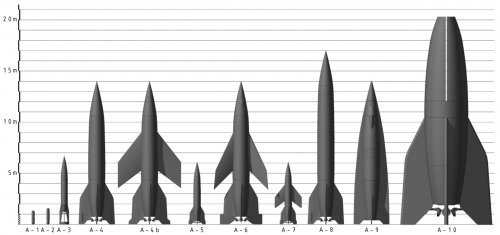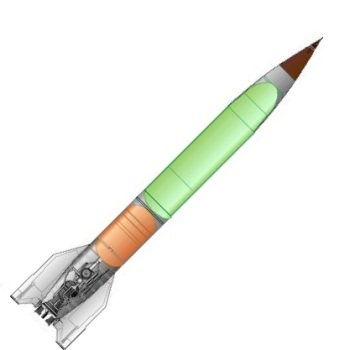Wasp
ACCESS: Restricted
- Joined
- 11 January 2010
- Messages
- 28
- Reaction score
- 12
And another rocket question, hoping to find some information through the esteemed members of this board. 
I'm also looking for some measures on the EMW A8 rocket.
There are differing information about this project floating around.
It seems that the A8 is the name of a prolonged A4 version which should have used a Salbei/Visol-engine instead of the usually very hard to store rocket fuels.
The only measure to be found through the web is a diameter of 0,78m, which is by far to small to be a A4 variant (A4 diameter: 1,65m), but is the diameter of the A5.
However there is a drawing for comparison of the EMW rockets from wikipedia, which shows an A8 that is 3m longer than the standard A4 (see below), which would be far more fitting. Also the illustration of Mark Wade (below) in www.astronautix.com looks by the proportion more like the longer A4.
Some sources mention that this design was taken over and developed further by the french also known as the Super V-2.
But information on this french Super V-2 is equally hard to come by.
So any help would be appreciated.
Thanks!
I'm also looking for some measures on the EMW A8 rocket.
There are differing information about this project floating around.
It seems that the A8 is the name of a prolonged A4 version which should have used a Salbei/Visol-engine instead of the usually very hard to store rocket fuels.
The only measure to be found through the web is a diameter of 0,78m, which is by far to small to be a A4 variant (A4 diameter: 1,65m), but is the diameter of the A5.
However there is a drawing for comparison of the EMW rockets from wikipedia, which shows an A8 that is 3m longer than the standard A4 (see below), which would be far more fitting. Also the illustration of Mark Wade (below) in www.astronautix.com looks by the proportion more like the longer A4.
Some sources mention that this design was taken over and developed further by the french also known as the Super V-2.
But information on this french Super V-2 is equally hard to come by.
So any help would be appreciated.
Thanks!


